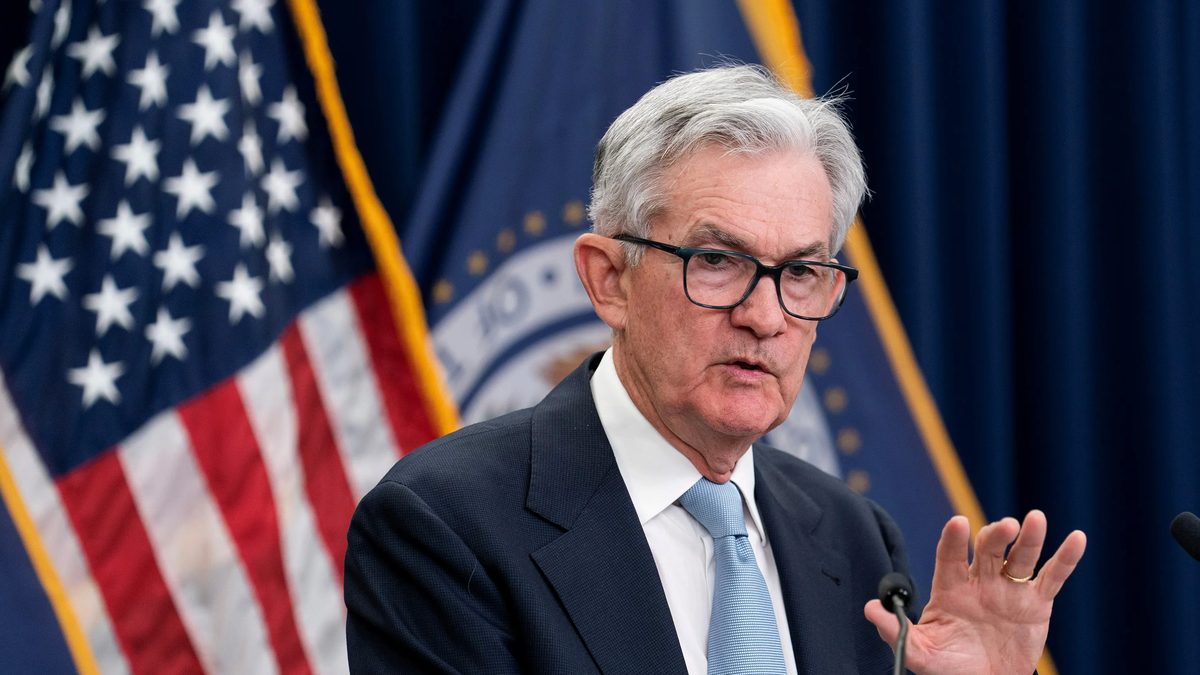Jerome Powell’s affable speech flows light with concerns, although he recognizes that inflation at the beginning of the year exceeded his forecasts.
The FED You say one thing, but do you think differently? He Jerome Powell’s affable speech flows light with concernsalthough he recognizes that the inflation from the beginning of the year exceeded his forecasts. Knowing the minutes of the last meeting, it is clear that the procession goes inside. There is consensus in maintain interest rates until its full effect decays. Powell hammers: monetary policy is restrictive. The credit channel is slow in the US. Fixed rate debt predominates. Thus, the rate adjustment only has a full impact with its roll over, when it is renewed. But the minutes raise several concerns. It is not known how much effective restriction it entails. Without a doubt, less than what was thought when the institution, in December, pivoted its agenda towards lowering rates.
The content you want to access is exclusive to subscribers.
The rise in inflation is a disorder. And also that the economy does not calm its momentum and may feed rebellion. A rate increase is “highly unlikely”according to Powell. Or not so much, for others, if inflation does not improve. Or even if you repeat the current readings and your progress plateaus (one and a half points above the 2% goal). The FED, after all, it is defined data-dependent. Although he promises patience and ties himself to the mast of high rates for longer. In parallel, Powell enabled a less aggressive balance sheet reduction starting in June. He ignored voices that preferred not to. Thus he freed the long rates from tightening the pegs on his account. It’s clear, the big boss rules. And the decisions were finally made unanimously. However, reality has the last word. If you insist on moving in the opposite direction, You should pay attention to it and accentuate rigor.


The economy is difficult to predictdiscovered Goldman Sachs. Trascartón, he canceled his forecast of a first rate cut in July and moved it to September. It still foresees two cuts this year, but first activity and prices must calm down. And data gets in the way: it wouldn’t be happening. Perhaps job creation will cool for a while. That’s all. The respite that activity took in March and April is over. The report PMI – with fresh information taken between the 10th and the 22nd – reveals that he accelerated his pace again. In May it registered the strongest pace in the last two years. And it brings with it increasing price pressure. The novelty is that now the impetus comes more from the manufacturing industry than from services. “The last mile towards the goal of the FED 2% still seems elusive,” the report concludes. If you review the indicator strip of the week the rhyme is evident. Home sales fall, but prices rise (5.6% the year-on-year median of used single-family homes). It also grows construction activity because no one moves, unless it is unavoidable. It is burdensome to cancel a mortgage and take out a new one at significantly higher rates. From a different angle, which confirms the industrial resurrection, durable goods orders that were expected to decline 0.8% in April – after two firm readings – rebounded 0.7%. It is understandable that Powell does not want to raise rates, the idea is not to break anything. But why should he lower them. Yes, it has already put a ceiling on long rates.
The economy preserves its pulse, the balance sheets do not clash. And, in particular, that of Nvidia It was spectacular. It tripled its sales for the third consecutive quarter. It increased its gross profit margin to 78%. And it catapulted the SOX semiconductor index and the Nasdaq to new records. Companies are mentioning inflation less and less when explaining their plans and more about artificial intelligence. However, news of the robust PMI report shook the rest of the market. The Dow Jones, in particular, retreated 600 points in its worst fall of the year. Faced with a novelty that closes the doors to an early rate reduction, not even Nvidia could offer a lifeline to close the week afloat to ten of the eleven sectors that make up the S&P500. Technology was the exception. It will not be easy to replicate such a balance. And very easy to collect more hot data. In three weeks, the FED meets again. Will he maintain the patience of his speech or will he give in to other preventions? May is not usually favorable for the stock market that is trading at the highest. And the electoral contest is already a sandpaper. Trump and his acolytes fire Powell. The White House defends the banner of central bank independence. But, Biden runs behind in the polls. Visible ceiling also for the aspirations of Wall Street? It was enough to know on Friday that consumers tempered their inflation expectations from 3.5% to 3.3% to calm the mood. It’s not that they are excellent predictors. They are fierce at making mistakes, but monetary policy takes their changes of opinion into account. As long as the feverish excitement of data does not subside, everything suggests, then, that the patience of FED is the key to favorable short-term navigation.
Source: Ambito




